Inside the elite world of international showjumping
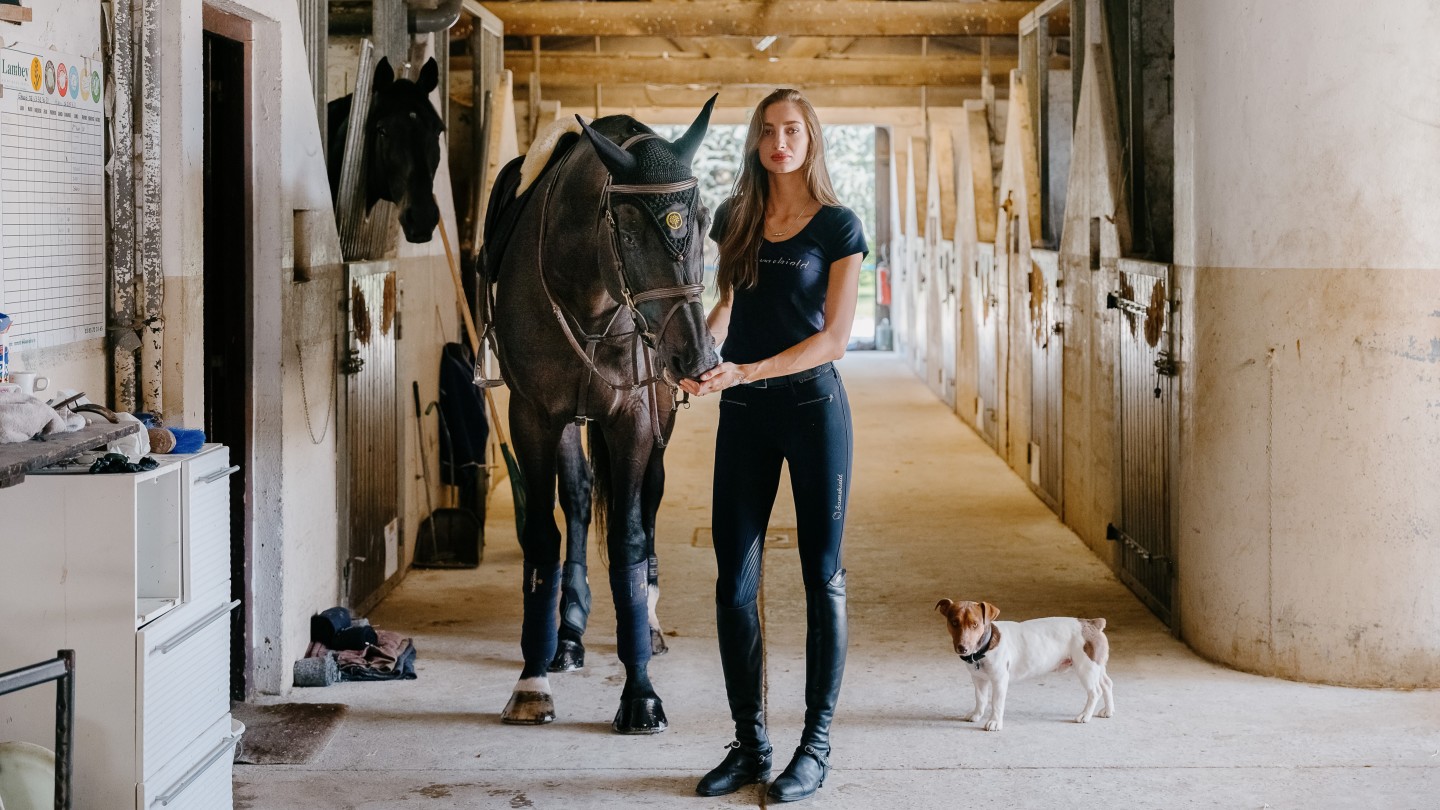
Simply sign up to the Style myFT Digest -- delivered directly to your inbox.
Jinking hooves, gleaming bridles and the unmistakable scent of horse sweat, leather and serious money; competition sponsors including Rolex, Hermès, Gucci and Longines; chic outdoor arenas at the foot of the Eiffel Tower, on Miami Beach and in Monte Carlo; and single competition prize money topping €1.2m. Showjumping is enjoying an unprecedented era of prosperity and prestige, revelling in its status as a chic, big-city affair that marries athletic prowess with high-stakes panache. Adroit marketing, and the support of rich benefactors, has played a part, but so too has the headline-grabbing enthusiasm of glamorous young women, many of whom are the daughters of some of the richest, most powerful people in the world.
There’s 29-year-old Jessica Springsteen (daughter of The Boss), who first sat on a horse at the age of four and recently took home a silver medal at the Tokyo Olympics. Jennifer Gates (daughter of Bill and Melinda), who has competed both in the US and internationally, and founded the Paris Panthers jumping team, which participates in the Longines Global Champions Tour. Georgina Bloomberg (daughter of the former mayor of New York City) is an investor in the Wellington Equestrian Center, the Palm Beach winter playground for the showjumping set. Other names to reckon with include Eve Jobs (daughter of Steve), Athina Onassis (granddaughter of Aristotle), Sofia Abramovich (daughter of Roman), Charlotte Casiraghi (daughter of Princess Caroline of Monaco) and Mathilde Pinault (daughter of chairman and CEO of luxury conglomerate Kering, François-Henri Pinault). That’s before you throw in British royalty (Zara Tindall, the Queen’s granddaughter) and leading Emirati like Sheikha Latifah Al Maktoum (daughter of Sheikh Ahmed bin Juma Al Maktoum and Sheikha Hessa bint Rashid Al Maktoum of the Dubai ruling family), models including Edie Campbell and Bella Hadid (who was tipped for stardom before teenage health issues stalled her career) and fashion moguls such as Mary-Kate Olsen, co-founder of The Row.
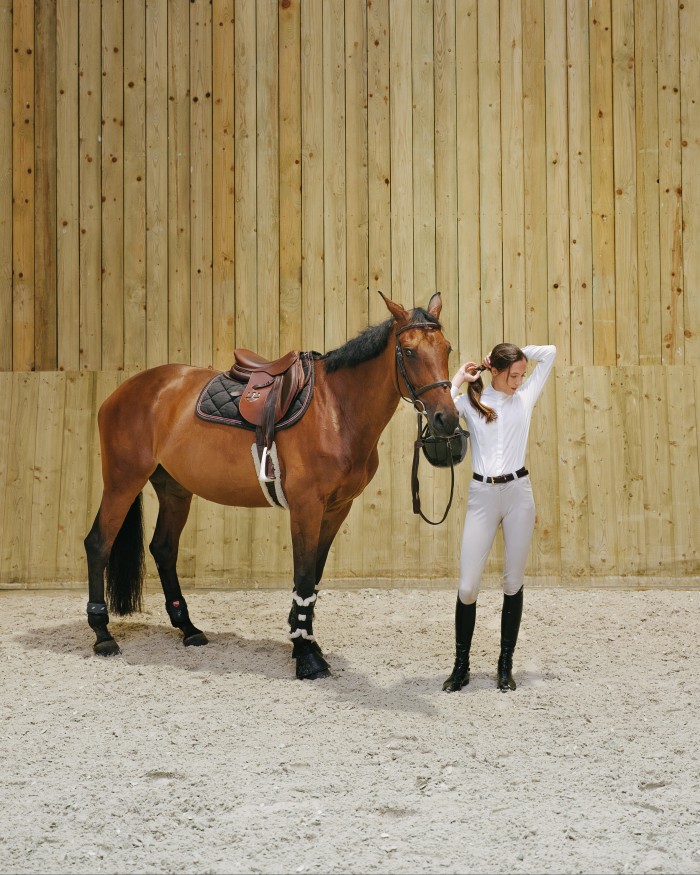
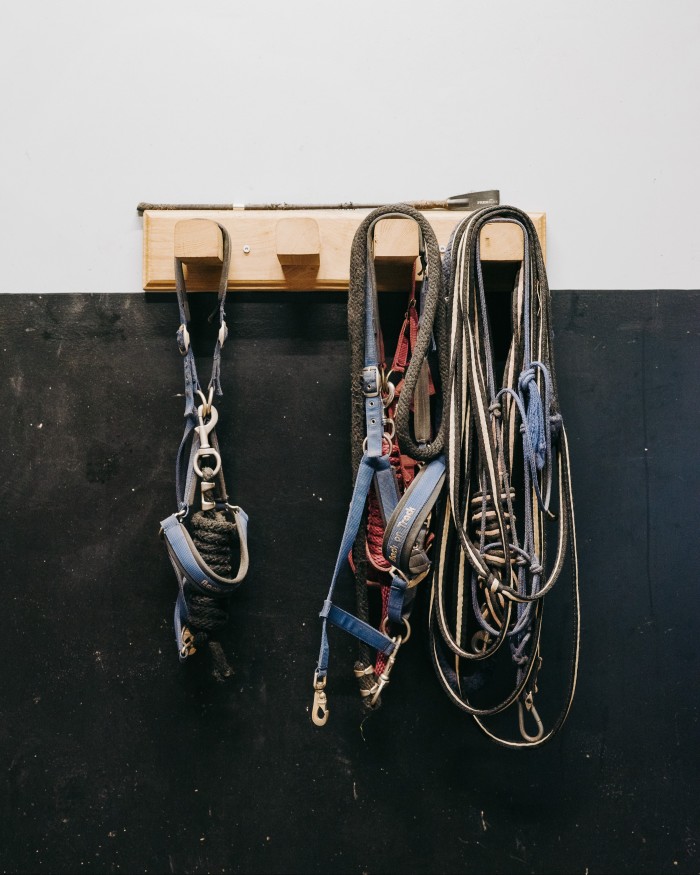
If a love of horses and a passion for the sport drives these riders, the roll call of so many wealthy families is also an indication of its expense. The so-called “warmblood” horses – considered less flighty and temperamental than thoroughbreds, and thus some of the most sought-after – fetch from around £40,000 for a young prospect yet to learn the job to six figures or more for a well-bred horse with a proven record. Owners must be prepared to spend up to £15,000 a month on stabling, training, veterinary bills and travel. A bespoke Hermès saddle, stitched by hand in the Paris atelier, costs £5,740.
The money
€25m
Total prize money at the Longines Global Champions Tour 2021
$15m
The price paid for top-class jumper Palloubet d’Halong by Jan Tops in 2014
$3,75
The approximate cost of hiring a stable at the Winter Equestrian Festival for the 13-week season
Up to $75,000
For one VIP table for the 13-week season at the Winter Equestrian Festival
$25,916
Full annual membership of Wellington International Polo Club
$59m
The amount Bill Gates reportedly paid for a series of properties comprising what is now known as Evergates Stables
From €60
Single spectator ticket to the Saut Hermès (to be next held in March 2022)
From £40,000
The cost of a young prospect horse yet to learn the job
“It’s an expensive sport for sure,” says 19-year-old Mathilde Pinault, who combines competitive riding with university studies. “When you have the money you’re going to be able to reach a much more professional standard in terms of your training and preparation.” But while Pinault acknowledges the costs, she’s dismissive of the idea that financial advantage alone – or your family name – might produce first-class equestrians. “The top riders in the world are the ones who learnt when they were young how to bond with their horses. First, you have to build that relationship. When I was four, I rode a Shetland pony in the Jardin du Luxembourg. By six or seven, I was volunteering to look after the horses. Then when I was 10, I was bought my first pony, and began riding at a pony club outside Paris.”
Springsteen credits her connection with horses to a childhood spent training at Beacon Hill Show Stables, near her family farm in Colts Neck, New Jersey. Jennifer Gates started riding at six. Eve Jobs was put on a horse at two.
“The harmony and trust between a horse and rider is key, and to jump high-level classes you have to build this special relationship from the outset,” says Flore Giraud, 25, one of France’s rising showjumping stars and a friend of Pinault’s – through their fathers. “I started riding at four and competing when I was eight. I was spending my whole day in the stables, and would have slept there if I’d been allowed.” Now based in Normandy, she rides “six horses. They give so much that we have to be their intimate friends. Building that relationship is one of the most exciting feelings one can have.”
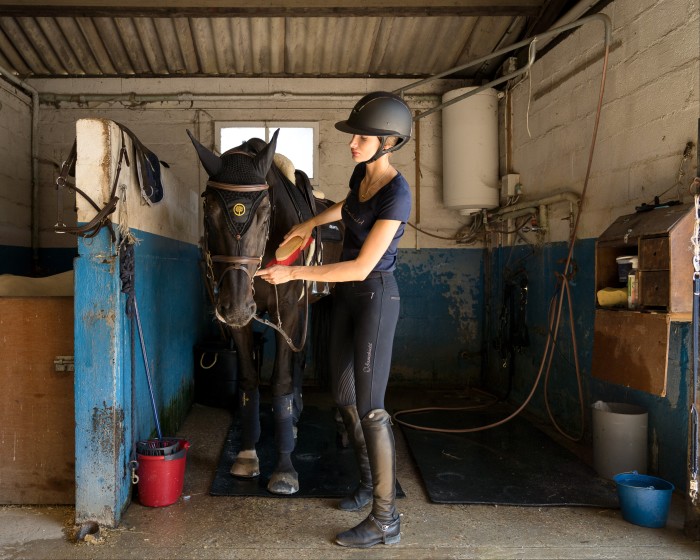
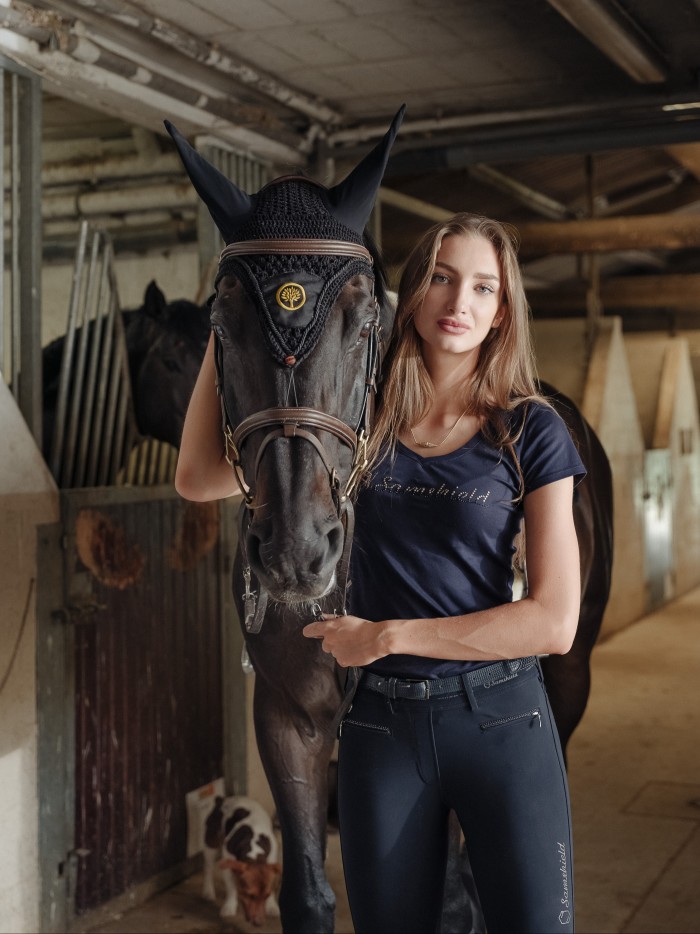
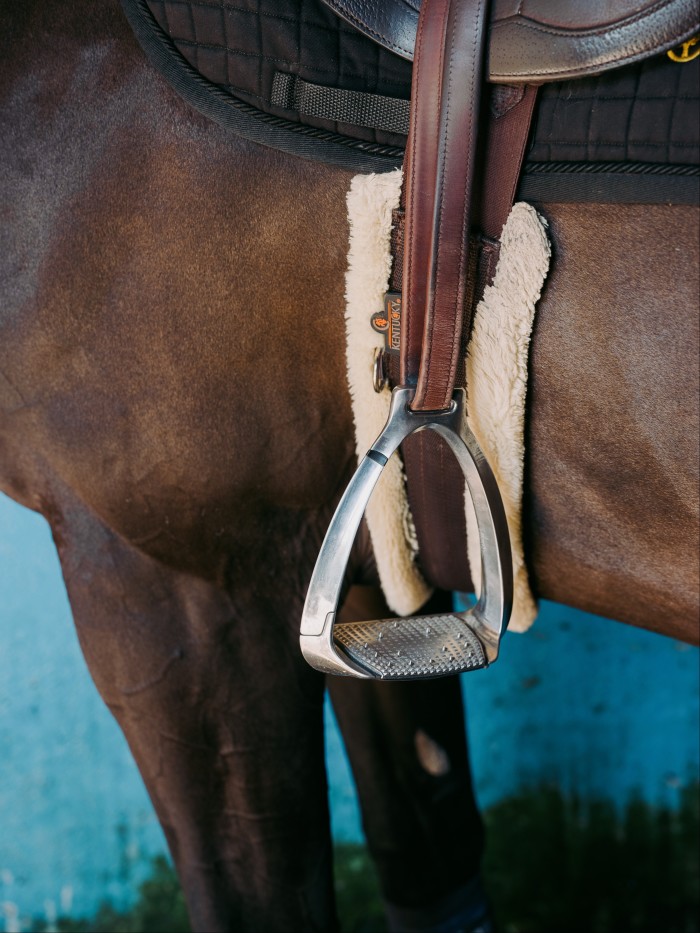
If the pony club is the starting blocks for the jeunesse dorée, in the US other organisations are also finding ways of fostering new talent. Sixteen-year-old rising star Zoie Brogdon’s love of riding was nurtured by a summer camp run by the Compton Cowboys, an off-shoot of the legendary Compton Jr Posse from the city south of Los Angeles. The Compton Cowboys have drawn on a tradition of African-American cowboys – who were a major part of the Old West but still feature only sparsely on the American rodeo circuit – to use equestrian culture to create a safer environment for children growing up in Compton today. “Being at the CJP is where my passion for horses ignited,” Brogdon said before competing at the Del Mar International showjumping competition in 2020. “They taught me not just how to properly sit on a horse but how to truly ride one. I’d love to rise to the highest levels of equestrian sport so that African-American girls can look to me for inspiration and know that it’s not impossible.”
It’s a sentiment echoed by young Palestinian Leila Malki, who in 2018 won the Against All Odds award at the FEI (Fédération Equestre Internationale) Awards at the age of 15. Malki comes from an affluent background but with nothing like the equestrian culture or history ingrained in riders from the Gulf states, such as Sheikha Latifah Al Maktoum. Despite growing up in a homeland riven with conflict, the teenager “had confidence to achieve my goals”, as she said in an interview following her FEI win, and hopes that her example will help to motivate other women, particularly in the Middle East, to “face their challenges”.
But passion – political or personal – needs precision. Flore Giraud’s father Luc, understanding his daughter’s focus, decided that the family ought to partly relocate to Normandy, the centre of French equestrianism. Three years ago, they built the Haras de Lécaude, a state-of-the-art stable half an hour’s drive from Deauville designed not only to facilitate every aspect of riding and training but also to “promote the wellbeing of the horses”, says Giraud. Here, Giraud and her colleague Pénélope Leprevost, the French Olympian, work with equestrian Henri Prudent and his American wife Katie Monahan-Prudent, renowned as one of the best trainers in the world. A therapist gives massages to ease the horses’ muscles and there are visits to an equine pool and spa.
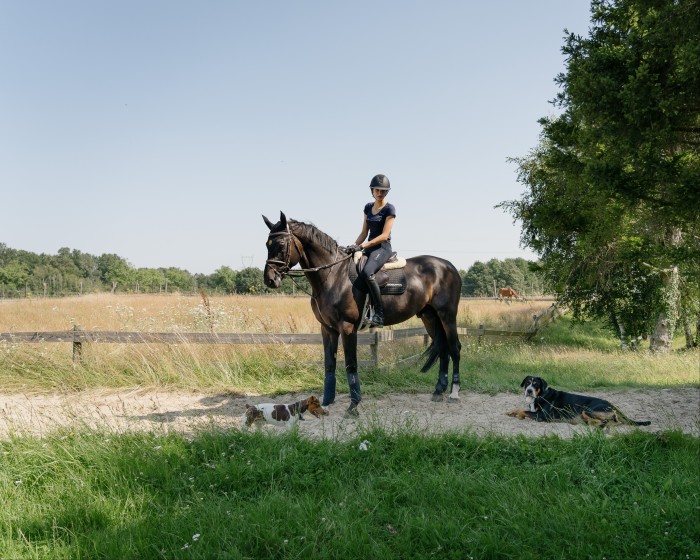

It’s a similar set-up at Jennifer Gates’s Evergate Stables in Wellington, Florida where her father Bill bought an entire street of houses reportedly worth around $59m to guarantee his daughter space and privacy. Just down the road, Stanford graduate Eve Jobs has her $15m ranch. Springsteen, meanwhile, rides horses (including Zecilie, a 14-year-old Holsteiner mare that she took to the Olympics) owned by nearby Rushy Marsh Farm, which sponsors lucrative showjumping competitions. These are some of the plushest stables in the world, with access to equine spas and interior-designed stalls (Ashland Farms is co-owned by interior designer Emily Smith and its Florida facility includes wagon-wheel chandeliers).
The stables
Beacon Hill Show Stables
The stomping ground of Jessica Springsteen, this Colts Neck and Wellington-based training ground has coached 19 students to wins at each of the major equitation finals over the past 18 years.
Haras de Lécaude
On top of the expert supervision of French equestrian Henri Prudent and his American wife Katie Monahan-Prudent, Haras de Lécaude offers state-of-the-art stabling and training arenas and equine massage.
Ashland Farms
Headed up by trainers Ken and Emily Smith (also an interior designer), Ashland Farms has a total of 48 stalls available throughout the year. Expect horse exercisers, jumper rings and wagon-wheel chandeliers.
Unsurprisingly, Wellington is seen as one of the world’s most affluent equestrian communities. The Palm Beach International Equestrian Center, a 500-acre showground owned by Global Equestrian Group, stages an annual 13-week winter festival featuring competitions with $13m of prize money. “Wellington is a great experience for me,” says Giraud. “The courses are huge, and American riders are among the quickest in the world.” With the International Polo Club, owned by Wellington Equestrian Partners (not to mention Donald Trump’s Mar‑a‑Lago), less than an hour’s ride away, the ambience is what the satirical Florida novelist Carl Hiaasen describes as “like the Hamptons with extra sunblock”. (The sport’s intense and insular world encourages periodic flutterings in the gossip columns about romance in the saddle. Are Jessica Springsteen and Lorenzo De Luca still an item? How is Jennifer Gates enjoying marriage to the US-born Egyptian equestrian Nayel Nassar, a fellow rider on her Paris Panthers team?)
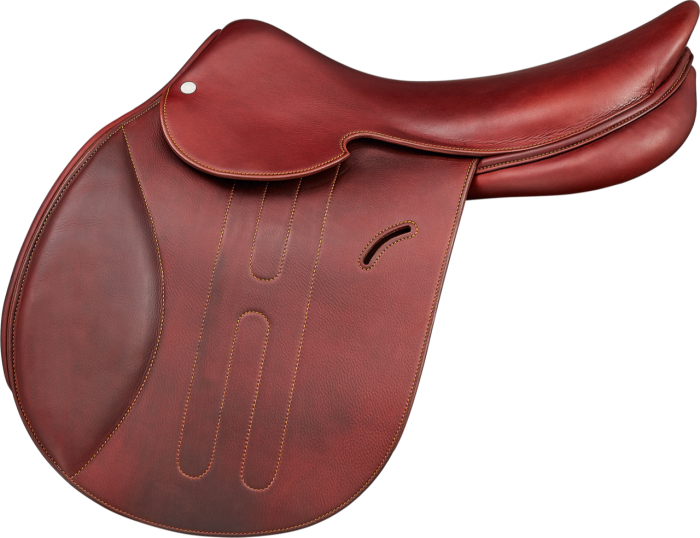
But much of the contemporary appeal to international glitterati on a competitive level can be laid at the feet of the Longines Global Champions Tour, the Formula One of showjumping. The competition was launched in 2006 by Jan Tops, the Dutch Olympic gold-medal winner. “I wanted to raise the threshold of showjumping around the world,” he says. “And I believe we have absolutely changed that.” Tops set up a sequence of six competitions (there are now 16) across the continents, each staged in eye-catching outdoor venues in the global playgrounds of the rich and famous, including Palm Beach, Monaco, Estoril and Cannes. Within eight years prize money had risen to €9m, with €300,000 for each Grand Prix. Tops was dubbed the “Bernie Ecclestone of showjumping” and while he gently shrugs off the comparison, he admits that the Formula One supremo was “a visionary”.
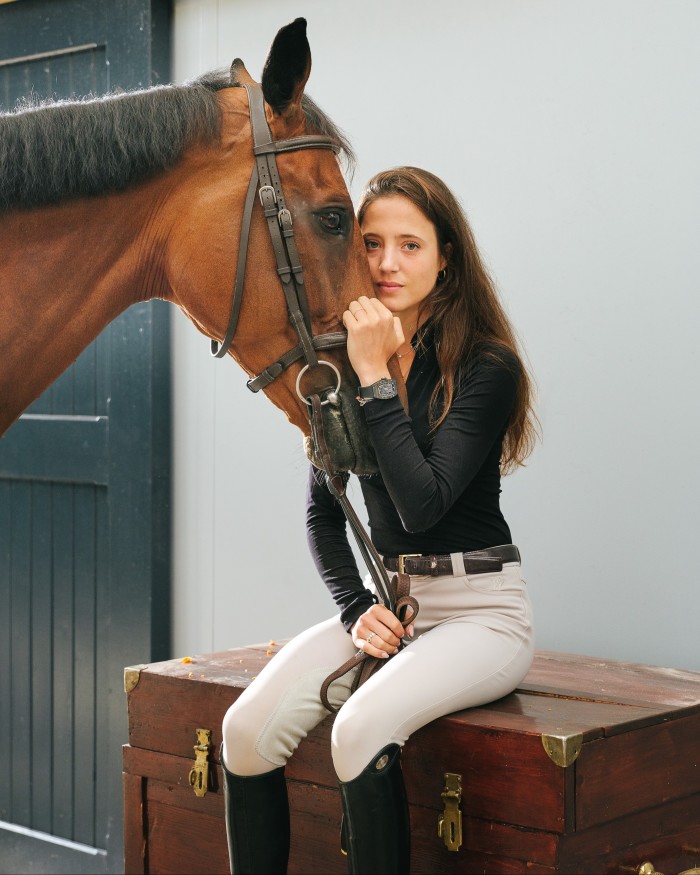
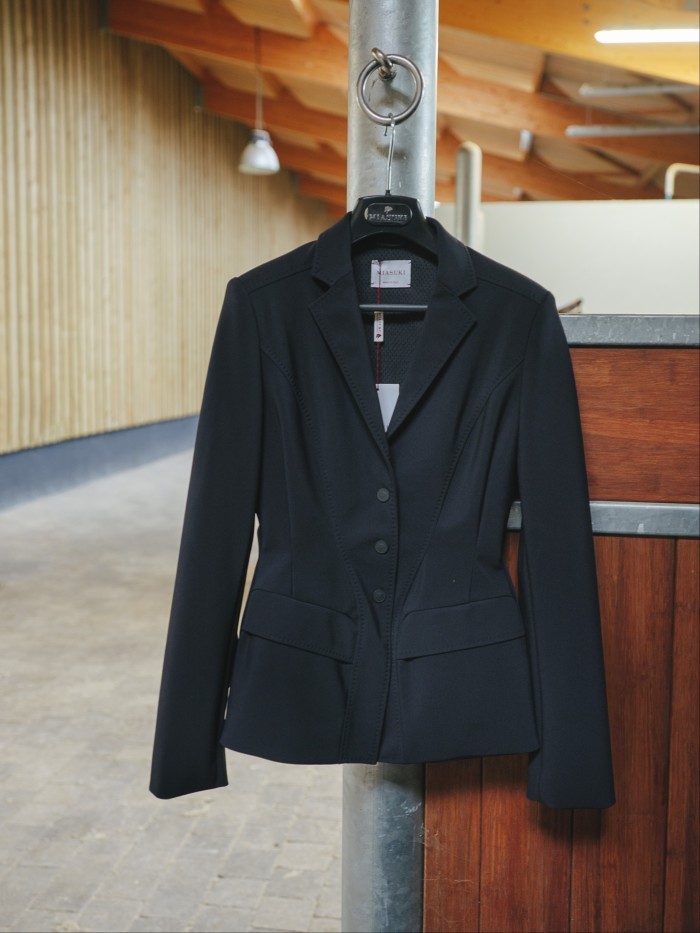
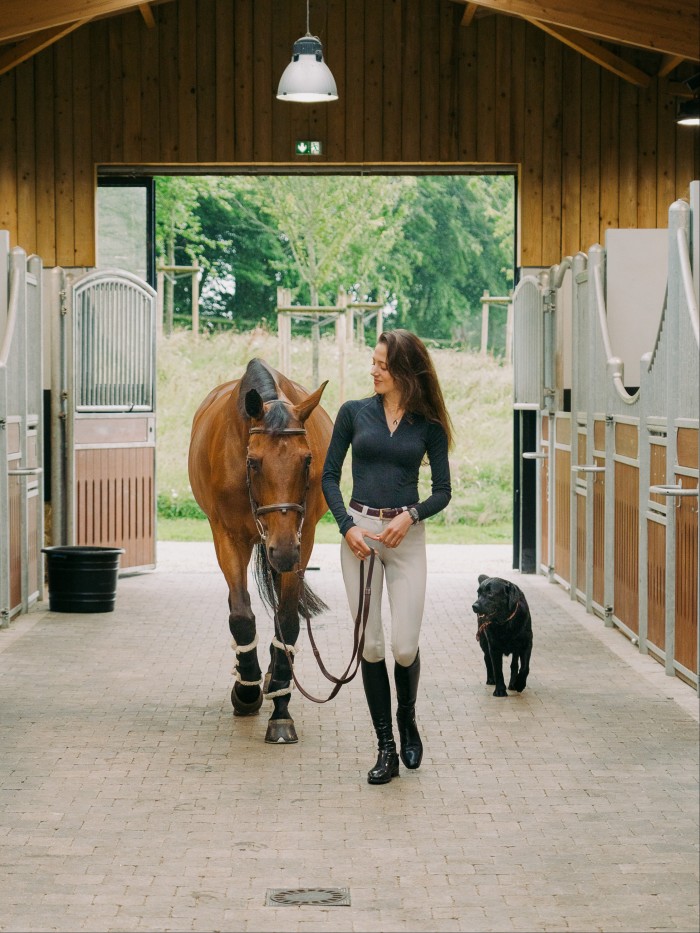
Things moved into a higher gear in 2014 when it was announced that Tops had sold 50 per cent of the GCT to Frank McCourt, an Irish American property and construction tycoon who bought the Los Angeles Dodgers baseball team from Rupert Murdoch’s News Corp for $430m in 2004, selling it for $2bn eight years later. McCourt’s second wife, the Texan Monica Algarra, is a riding enthusiast and McCourt found himself bitten by the equestrian bug. Showjumping, he declared, had “a great foundation in place and history and legacy”, and from the outset he was determined to build the tour into “a truly global brand”. Swiss watchmaker Longines came in as “title partner”, and the tone elevated further still.
But crucially, in 2016, Tops and McCourt added an elite dimension to their creation: the introduction of the Global Champions League, a team contest loosely modelled on sports like baseball and American football, in which 16 teams (of six riders each) reportedly pay €2m to enter and chase a pot of €12m. Privately wealthy riders such as Jennifer Gates, prepared to contribute at least half a million euros to set up a team, are thus able to engineer a spot to ride against the big names in the individual Grand Prix events at the GCT meetings.
“There can only be a positive to these people coming into the sport,” believes the young Irishman Michael Duffy, who started out with little in the way of financial advantages but whose sheer ability has resulted in him riding for Frank McCourt’s GCL team, the Miami Celtics, and Ireland’s Tokyo Olympic team. “Jumping with people like Jessica and Jennifer is brilliant. It’s just not possible to ride a horse to that level without talent. The Global Champions League has massively helped to raise the profile of the sport, especially in areas such as Shanghai, which traditionally didn’t have a big showjumping scene. By going to new countries and maintaining an elite level we are encouraging more of a following and exposing the sport to new markets.”
“It’s a niche within a niche,” counters Simon Brooks-Ward, whose HPower Group organises major ticketed equestrian events including the Royal Windsor Horse Show and The London International Horse Show. He also advised on the staging of the equestrian events at the 2012 Olympics where Zara Tindall won a silver medal with the British eventing team. Brooks-Ward feels strongly that while “in every sport it’s good to have a bit of glitter and stardust, you have to have a bedrock of events with a sense of history. The Longines Global Champions Tour has a very different business model to ours. London International Horse Show is based on 90,000 people buying tickets, whereas the GCT is based on wealthy patrons and people who are prepared to deal in horses. They draw a maximum audience of around 2,000 to 3,000. It’s not for the general populace.”
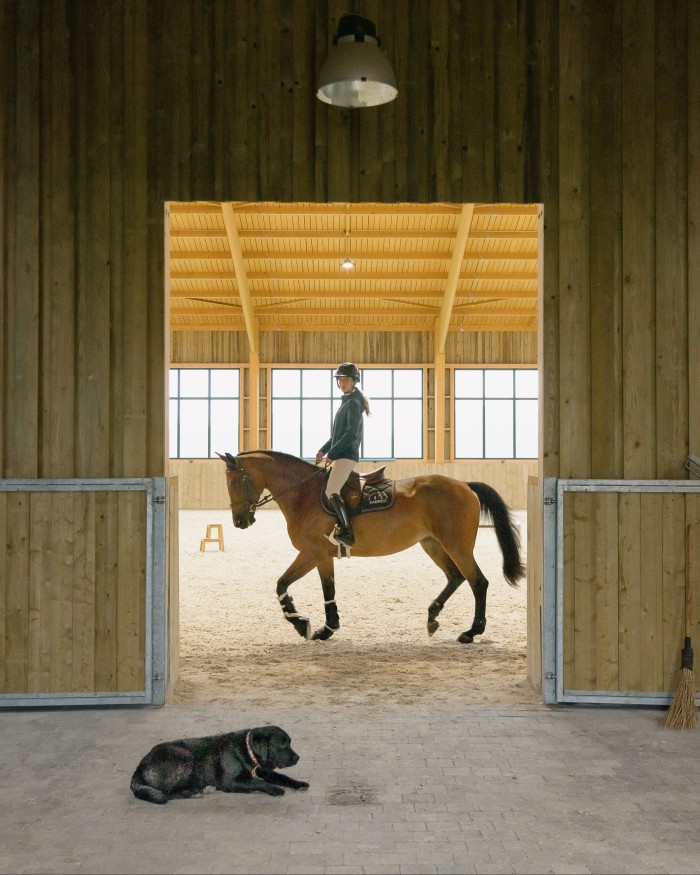
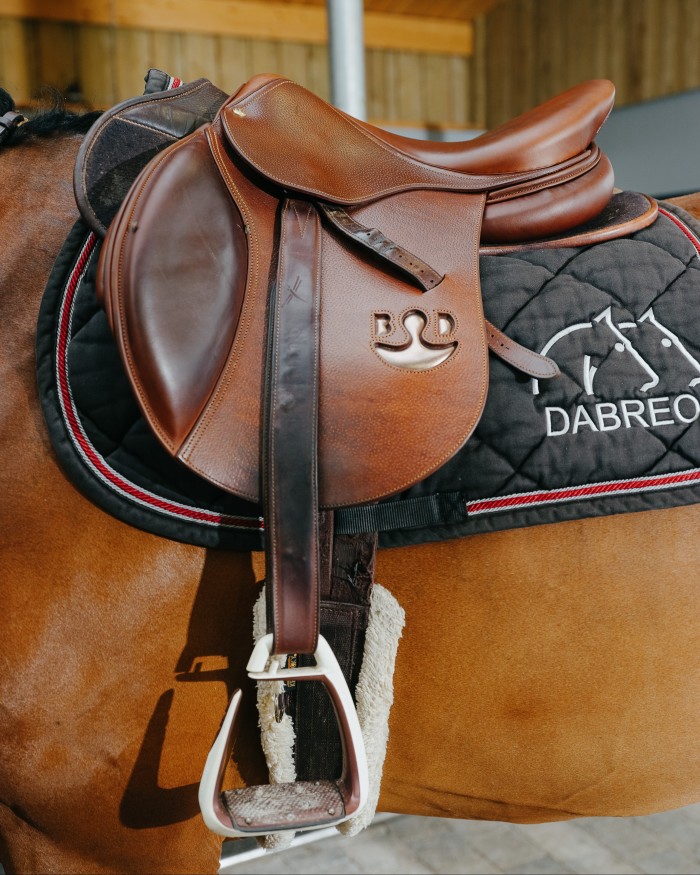
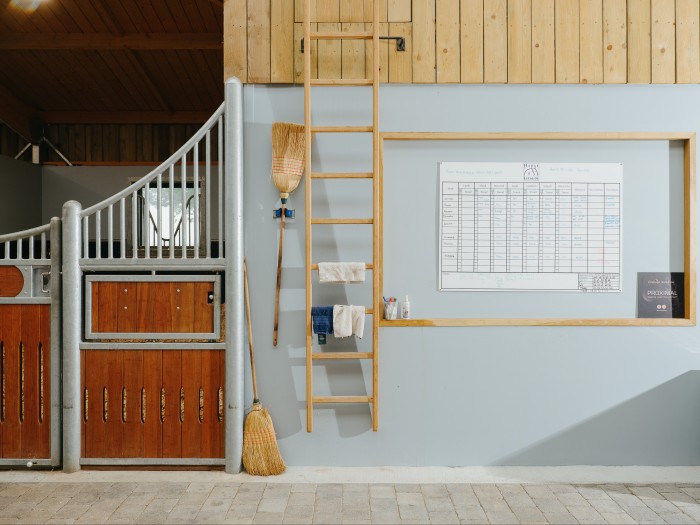
But the appeal is increasing for a wider audience. The dazzling Concours Hippique International Officiel takes place at Aachen in Germany every summer in front of 40,000 spectators who must be one of the best-dressed and most prosperous crowds in Europe. Often described as the equivalent of Wimbledon in Germany’s sporting and social calendar, it culminates in showjumping’s Rolex Grand Prix, worth €330,000. Hermès, whose name has been inextricably linked with equestrianism since it was founded in 1837, has also created an annual show inside the vast halls of the Grand Palais in Paris. The Saut Hermès event debuted in April 2010 and, until Covid-19 intervened, had become the European horse show to be seen at.
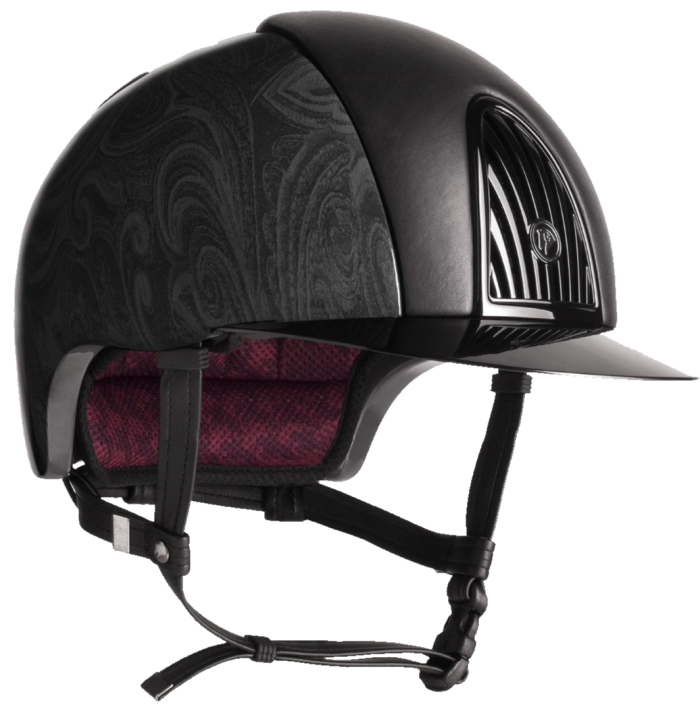
And seen they are. Those chic white breeches and black leather boots present an indisputably glamorous uniform. Jessica Springsteen wears shirts and breeches made by Cavalleria Toscana, and boots tailor-made by Italian bootmaker Parlanti, which have magnets on the bottom that stick to her stirrups “so that I don’t lose a stirrup when I’m riding around the ring”. Mathilde Pinault and Flore Giraud, who chooses her equipment “for sport but also for elegance”, have both modelled for the equestrian fashion house Miasuki, and Giraud is also an ambassador for Richard Mille.
“In terms of sponsorship and brands, it has become so sexy, and the prize money is extraordinary. I don’t think there is anything else that can touch it,” says equestrian PR specialist Phoebe Oliver. Although she fears that some of the next generation coming into the sport may “enjoy the competing, the socialising and travel perhaps more than the actual riding itself”, she also believes that the hours of training required to reach the highest level will always weed out the dilettantes from the genuine contenders.
“Who does not dream about the Olympics?” says Flore Giraud, whose great ambition is to ride for France in the Paris Olympiad in 2024. “Our sport is magic because of them, and the strength of a rider and horse is a mixture of magical elements… and of hard work.”
Letter in response to this article:
It takes more than money, but being rich does help / From Katie Stallard, Chorley, Lancashire, UK
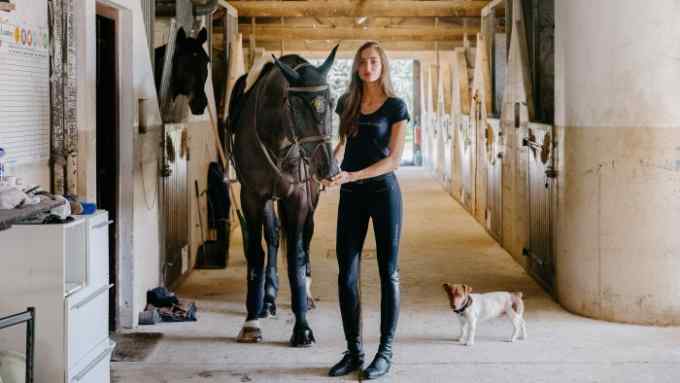
Comments